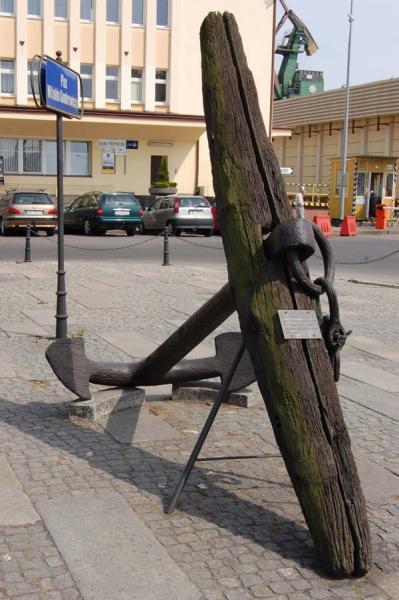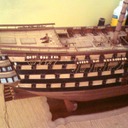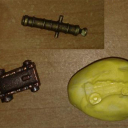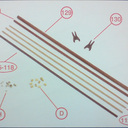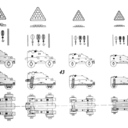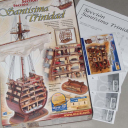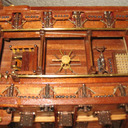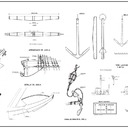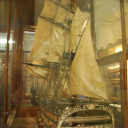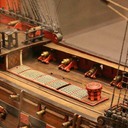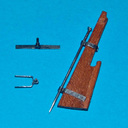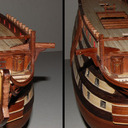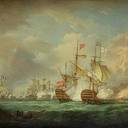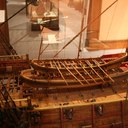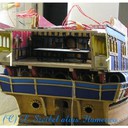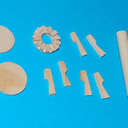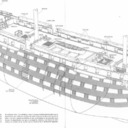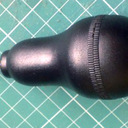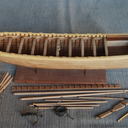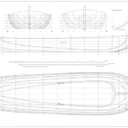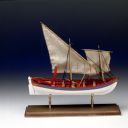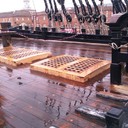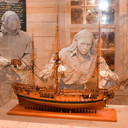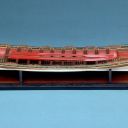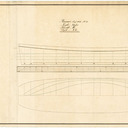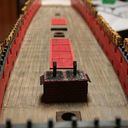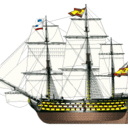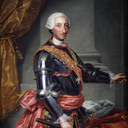- Jesteś tutaj:
-
Start

-
Grupy

-
Santisima Trinidad 1769 - 1805

-
Tytuł

-
KOTWICE H.M.S. Victory

KOTWICE H.M.S. Victory
Karrex
Dyskusja rozpoczęta przez Karrex 10 lat temu
- Uzbrojenie Santisima Trinidad 1769 - 1805 8 odpowiedzi Rozpoczęta przez Cabelinho
- Santisima Trinidad 1769 - 1805 / Historia 0 odpowiedzi Rozpoczęta przez Karrex
- Replika - Santasima Trinidad w Alicante, Hiszpania 5 odpowiedzi Rozpoczęta przez Cabelinho
- Problem z Zestawem Santisima Trinidad z Occre 5 odpowiedzi Rozpoczęta przez Cabelinho
- [Santisima Trinidad] Różnice w kolekcjach cz.2 / ARTYLERIA / ŁODZIE OKRĘTOWE 0 odpowiedzi Rozpoczęta przez Karrex
- ST / Grafik na wschodzie / Zeszyty 41 - 80 0 odpowiedzi Rozpoczęta przez Karrex
- [Santisima Trinidad] Różnice w kolekcjach 0 odpowiedzi Rozpoczęta przez Karrex
- ST / Grafik na wschodzie / Zeszyty 1 - 40 0 odpowiedzi Rozpoczęta przez Karrex
- Zobacz wszystkie dyskusje (48)
KOTWICE H.M.S. Victory
Opis, który mówi o siedmiu kotwicach:
The Victory carried 7 anchors of various sizes for different uses; these were:
One (1) Best Bower: This served as one of the two main anchors used for holding the ship in deep water. Being the heaviest and strongest, it was always rigged on the starboard (right hand) side of the ship because of prevailing winds found within the northern hemisphere.
Weight 4 tons. 9 cwt. 1 qtr. 14 lbs. (4.54 tonnes).
One (1) Bower: Serving the same purpose as the Best Bower, but not as strong, this anchor was always rigged on the larboard (port) side of the ship.
Weight 4 tons. 8 cwt. 2 qtrs. 22 lbs. (4.51 tonnes).
Two (2) Sheet Anchors: These served as spares for the two bower anchors. Each was rigged on one side of the ship.
Weight of each, 4 tons 4 cwt. 3 qtrs, 12 lbs. (4.31 tonnes).
One (1) Stream Anchor: This was a lightweight anchor used for anchoring the ship in low tide stream and shallow water. It could also be used for warping the ship (see below).
Weight 1 tons. 1 cwt. 3 qtrs. 7 lbs. (1.10 tonnes).
Two (2) Kedge Anchors: One large and one small, these very lightweight anchors were used to keep a ship steady and clear of her bower anchor when riding at anchor in harbour. These were also used used to 'kedge', or warp the ship:
Kedging, or warping, means to haul the ship along by bringing in the cable by use of the capstan. The kedge anchor was then again taken out in the ships launch and re-laid and the operation repeated. This was generally done in confined waters or when there was no wind.
Weights: 10 cwt (0.51 tonnes) and 5 cwt (0.30 tonnes) respectively.
ANCHORS: SIZES, TYPES & USES
Type
Number
Weight
Best bower anchor - Kotwica główna / Dziobowa
1
4 tons/4.54 tonnes
Small bower anchor - Mała kotwica dziobowa
1
4 tons/4.51 tonnes
Sheet anchors - Kotwica zapasowa
2
4 tons/4.31 tonnes
Stream anchor - Kotwica prądowa
1
1 ton/ 1.10 tonnes
Large kedge anchor - Duża kotwica zawoźna
1
1/2 ton/ 0.51 tonnes
Small kedge anchor - Mała kotwica zawoźna
1
1/4 ton/ 0.30 tonnes
Best bower anchor:
The best bower anchor was one of Victory's two main anchors. It was called 'bower' because it was secured to the starboard (right) bow. The heaviest and strongest anchor carried by the Victory it was used for anchoring the ship in deep waters.
Small bower anchor:
The small bower anchor was also used for anchoring the Victory in deep waters, although it was not as strong as the best bower. It was also attached at the bow (front) of the ship, but on the port (left) side.
Sheet anchors:
Victory's sheet anchors were positioned behind the bower anchors on each side of the ship. They were carried as spare anchors in case the bower anchors were lost.
Stream anchor:
The stream anchor was a small lightweight anchor used for anchoring in shallow waters. Normally tied to the starboard sheet anchor, the stream anchor could also be used to warp the ship.
Large & Small kedge anchors:
Victory's smallest anchors, the kedge anchors were used when the ship was anchored in a harbour. They helped to steady the ship and keep her clear of the bower anchor cable. They could also be used to 'kedge' or warp the ship. Warping was a way of moving the ship in a confined space or if there was no wind. The kedge anchor would be rowed away from the ship by boat and then lowered. By pulling in the anchor cable the ship could be moved along. This could be repeated until there was more space or the sails caught the wind.
Tłumaczenia nazw kotwic (i do czego służyły) w artykule p. Krzysztofa Gerlacha
» KOTWICE ŻAGLOWCÓW I WCZESNYCH PAROWCÓW
http://santisimatrinidad....php?p=1876#1876
Z tegoż artykułu:
-
Na okrętach brytyjskich i amerykańskich, w typowej dla okresu wojen napoleońskich konfiguracji, z czterema wielkimi kotwicami na dziobie - tzn. dwie główne (bowers) całkiem z przodu, dwie zapasowe (sheet anchors) w tyle ław wantowych fokmasztu – oraz z jedną małą kotwicą prądową i jedną jeszcze dwa razy od niej lżejszą kotwicą zawoźną, dwie ostatnie wiązano do kotwic zapasowych w taki sposób, by w miarę zrównoważyć masy po obu burtach (rys.24). Podobny układ stosowano w wielu marynarkach także po 1815 r.

Największe liniowce – jak Victory - miały często jedną kotwicę prądową i dwie mocno różniące się masą kotwice zawoźne, a wówczas najlżejsza z nich mogła trafiać na sterburtową ławę wantową bezanmasztu.
Też jest mowa o siedmiu kotwicach - cztery dziobowe, jedna prądowa i dwie zawoźne.

Sheet anchors - Kotwica zapasowa
Victory Anchor
The anchor of HMS Victory, now situated on Southsea seafront, Portsmouth.
http://www.flickr.com/photos/danataylor/141551595/
I jeszcze podpis pod innym zdjęciem tejże kotwicy:
-
Battle of Trafalgar memorial
an anchor from HMS Victory, originally sited further
to the west, marking the spot where Nelson
left England for the Battle of Trafalgar.
http://www.flickr.com/pho...N07/7679362472/
_______________________________________________________________
NMM Greenwich, Londyn
Plan kotwic 74działowego okrętu wojennego, głównej (dziobowej ang. Bower) i zawoźnej (ang. Kedge Anchors).
Bower and Kedge Anchors with tables of weights and anchor allocations for 74-gun Ships (no date)
http://collections.rmg.co...ects/86489.html
Układ gwoździowania jak na planie kotwicy 20działowca.
Nasunęło mi się pytanie, czy te metalowe łączniki szły na wylot (po drugiej stronie byłoby odbicie lustrzane), czy były to gwoździe, które się mijały (czyli z drugiej strony ten sam układ)???
Jest kilka planów poprzeczek (dat. 1835), jednak bez gwoździowania, plany kotwicy projektu Perring'a i patentu porucznika Rogera, ale na tych planach doskonale widać profilowanie
1835
http://collections.rmg.co...cts/255398.html
http://collections.rmg.co...ects/67962.html
http://collections.rmg.co...ects/67963.html
http://collections.rmg.co...ects/67948.html
http://collections.rmg.co...ects/67950.html
National Maritime Museum, Greenwich, London
___________________________________________________________________________________
WALORYZACJA
W zeszycie drugim, w instrukcji montażu kotwicy zabrakło mi kilku propozycji waloryzacji, mianowicie wykonanie
-
• zwężeń ramion poprzeczki (sztok) kotwicy,
• owinięcia pierścienia kotwicy linką,
• wykonanie gwoździowania na poprzeczce,
• metalowe obejmy na poprzeczce zamiast owijek z liny (zresztą błędnych - czytaj dalej)
• Wyjaśnienia (schemat) jak wiązać węzeł kotwiczny rybacki i półsztyki.
KOTWICA ADMIRALICJI
Na stronie angielskiej (powtórzone na niemieckiej) taki opis jest.


i jak widać poprzeczka na końcach jest węższa.

___________________________
zdjęcia zaczerpnięte ze stron DeA
Zawsze, przystępując do waloryzacji, trzeba zgromadzić archiwum (najlepiej z planami i detalami naszego modelu), na którym będziemy się wzorować. Dobrze też mieć wiedzę historyczną i wiedzieć np., że "...Najpóźniej w drugiej połowie XVIII w. typowe w poprzeczkach kotwic z Wysp Brytyjskich stało się pozostawianie w środku, między obu kłodami składowymi, wąskiej szczeliny. Jedni tłumaczą to reakcją na zjawisko kurczenia się drewna i potrzebą przeciwdziałania jego skutkom przez odpowiednie przesuwanie żelaznych opasek łączących, inni chęcią zapobieżenia gniciu na powierzchniach styku łączonych belek."
-
W instrukcji w kolekcji DeA jest pokazane wykonanie owijek z liny na poprzeczkach kotwicy, chciałbym, aby każdy decydujący się na to rozwiązanie miał świadomość tego, że jest to rozwiązanie błędne i nie historyczne.
Potwierdzeniem niech będzie opinia znawcy tematu, pana Krzysztofa.
-
Krzysztof Gerlach napisał:
...
Linowe owinięcia ZAMIAST żelaznych opasek wzmacniających na poprzeczkach kotwic sporadycznie się trafiały, zwłaszcza przy małych sztukach, używanych przez małe okręty. Sądząc po niezbyt precyzyjnej ikonografii spotykano je jeszcze w XVII w., chociaż już kilka wieków wcześniej standardem były owe metalowe opaski. Natomiast zastosowanie takich owinięć na modelu okrętu wielkości Victory z przełomu XVIII i XIX w. to absurd.
...
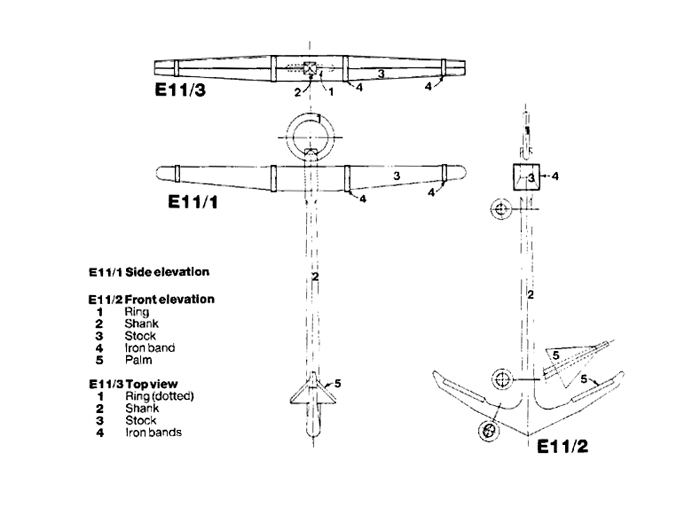
Na zdjęciu i na rysunku z "Anatomy of ...HMS Victory" widać wyraźnie metalowe obejmy oraz jak powinno wyglądać to zwężenie na poprzeczce z rzutu z góry. Nie ma natomiast gwoździowania, którego też nie widać na poprzeczkach kotwic na Okręcie-Muzeum.
Przykłady gwoździowania na poprzeczce
bez malowania z owijkami
sztok pomalowany z obejmami - na obejmach też można dać gwoździe
model Ipswich 1730
I jeszcze przykład tego zwężenia na kotwicy z XVII w. (z ulicy w Gdyni
